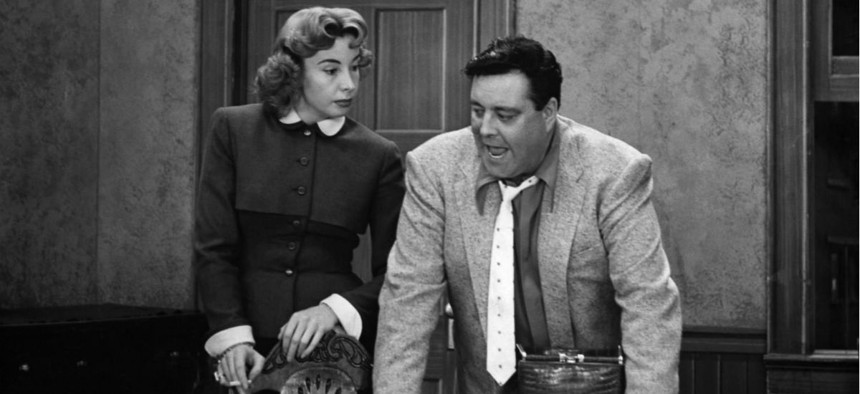Meet Ralph and Alice, NASA’s Power Couple
And one of the few federal systems you’ll remember by name.
With the spectacular success of the New Horizons mission to Pluto in July, we were treated to yet more of NASA’s intriguing terms, most notably Ralph and Alice, named after the lead characters in the popular 1950s sitcom The Honeymooners. Ralph is the New Horizons mission color-imager and infrared mapping spectrometer, which works with Alice, the ultraviolet spectrometer.
How does NASA come up with the names of its missions, equipment, probes, and programs? It seems commonly accepted that government does not value creativity, imagination, innovation, disruption and risk-taking. Perhaps NASA is the exception that proves the rule. Its most visible terms are intelligent, pictorial, playful, distinctive, imaginative and any combination of these qualities. Databases kept by Govlish, which is developing an online tool to decode government language, now encompass more than 30,000 federal terms. While many are spelled out in 20 or more meanings, we can tell you beyond a shadow of a doubt that there is only one “Ralph” and one “Alice.”
Most importantly, NASA terms are memorable. In an age that burdens us with information overload, drowns us in data, and talks in sound bites, “memorable” has high value. In short, NASA terms engage us and pique our curiosity to know more. And the more government engages and enlightens its citizens, the more our citizens will value government. This is where its real value lies.
NASA tells us some things about its naming protocols. In most cases, NASA says, its officials pick the name of a new spacecraft or rocket after conducting an in-house study. (Which officials and how many? What is this in-house study? How is the final pick made? Is there a vote? If any NASA “Govlanders” know the answers to these questions, please contact us at AlphaSoup@govlish.com.)
In other cases, a public competition is held. For example, NASA held a competition to name its Spirit and Opportunity rovers, which landed on Mars in 2004. More than 10,000 people sent in their favorite names, and the winning entry was submitted by a 9-year-old Arizona girl. (Again, if you know how the competitions are conducted and the winner chosen, please let us know.)
We know that Ralph and Alice got their names because they are coupled “till death do us part” in an imaging system that’s sending us all those glorious, amazing pictures of Pluto. We wish them a long and happy life together.
Robert Mander is the founder of Govlish, a service to help decipher the language of government. He has worked with more than 25 federal, state, and local agencies as a technical writer. He can be reached at AlphaSoup@govlish.com.



